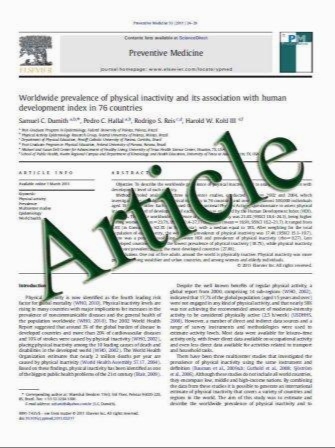Gender and ethnicity differences in the prevalence of scleroderma-related autoantibodies
- نوع فایل : کتاب
- زبان : انگلیسی
- مؤلف : Malgorzata E. Krzyszczak & Yi Li & Steven J. Ross & Angela Ceribelli & Edward K. L. Chan & Michael R. Bubb & Eric S. Sobel &Westley H. Reeves & Minoru
- چاپ و سال / کشور: 2011
Description
Autoantibodies to topoisomerase I (topo I), RNA polymerase III (RNAPIII), centromere, U3RNP/fibrillarin, Th, PM-Scl, and U1RNP found in scleroderma (SSc) are associated with unique clinical subsets. The effects of race and gender on autoantibody prevalence and clinical manifestations were examined. Autoantibodies in sera from 105 SSc (include 75 Caucasian, 24 African-American, 6 others; 89 females and 16 males) were analyzed by immunofluorescence and immunoprecipitation. Clinical information was from database. SSc-related autoantibodies seldom coexist except for anti-topo I and anti-U1RNP. Antitopo I (35% vs 15%), anti-U3RNP (30% vs 3%, p=0.0005), and anti-U1RNP (30% vs 13%) were more common in African-Americans vs Caucasians. Anti-centromere (17%) and anti-PM-Scl (only in 8% of female) were found only in Caucasians. In race/gender combination, all three African- American males had anti-topo I (p=0.04). Anti-U3RNP (35% vs 3%, p=0.0005) and anti-U1RNP were common in African-American females. In African-American, all nucleolar dominant staining sera had anti-U3RNP; nuclear pattern was topo I (50%), U1RNP (19%), and RNAPIII (13%). In Caucasian, nucleolar was anti-Th (43%) and PM-Scl (29%); nuclear pattern was RNAPIII (29%), topo I (24%), and U1RNP (18%). Anti-topo I, anti-RNAPIII, and anti-U3RNP were associated with diffuse SSc while anti-centromere, anti-Th, and anti-U1 with limited disease. Proximal scleroderma was less common in African-American with anti-topo I (38% vs 91% in Caucasian, p=0.04). The production of SSc-related autoantibodies is gender and race dependent, and this can be highly relevant in understanding their clinical significance
Clin Rheumatol Received: 23 January 2011 / Revised: 1 April 2011 / Accepted: 5 April 2011


